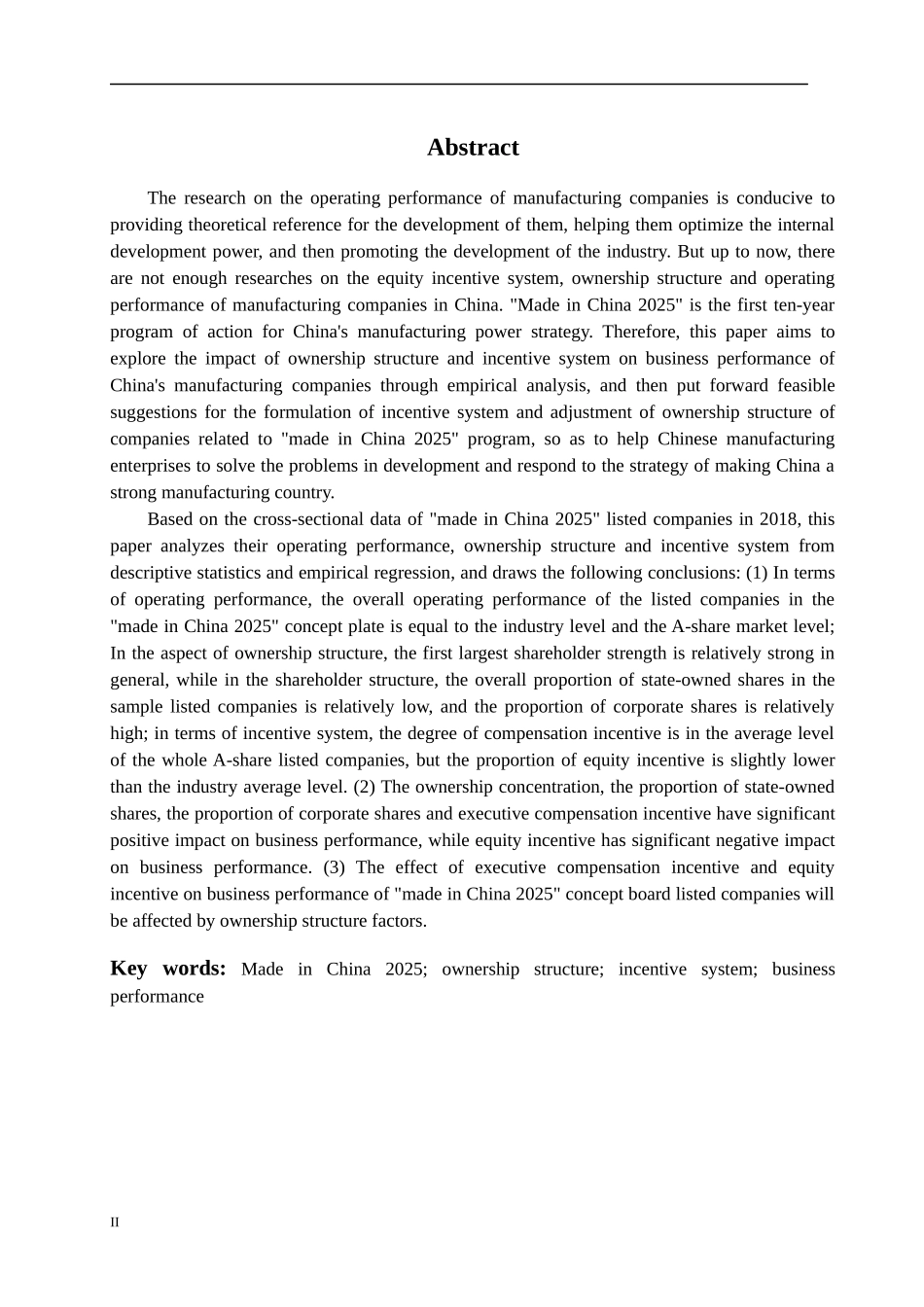摘 要对于制造业公司经营绩效的研究有利于从公司内部角度为企业发展提供理论参考,帮助其优化内部发展动力,进而推动行业发展。但是已有文献对针对我国制造业公司股权激励制度、股权结构和经营绩效的研究目前并不充分。《中国制造 2025》是我国制造强国战略第一个十年的行动纲领,因此,本文旨在通过实证分析,探究我国制造业公司股权结构与激励制度其对经营绩效影响,进而为“中国制造 2025”纲领相关公司激励制度的制定与股权结构的调整提出可行性建议,助力我国制造企业解决发展中的有关问题,响应我国制造强国战略。本文以 2018 年“中国制造 2025 规划”概念上市公司的横截面数据作为研究样本,从描述性统计与实证回归方面对其经营绩效、股权结构以及激励制度进行分析,并且得出了以下结论:(1) “中国制造 2025 规划”概念板块上市公司在经营绩效方面,整体经营绩效与行业水平以及 A 股市场水平持平;在股权结构方面,第一大股东力量总体来说较强,而在股东结构中,样本上市公司整体国有股比例较低,法人股比例较高;在激励制度方面,薪酬激励程度处于整个 A 股上市公司中的平均水平,但是股权激励比例则略低于行业平均水平。(2) “中国制造 2025 规划”概念板块上市公司股权集中度、国有股比例、法人股比例以及高管薪酬激励对经营绩效具有显著的正向影响,而股权激励对经营绩效具有显著的负向影响。(3) “中国制造 2025 规划”概念板块上市公司高管薪酬激励以及股权激励对经营绩效的影响效果会受到股权结构因素的影响。关键词:中国制造 2025;股权结构;激励制度;经营绩效IAbstractThe research on the operating performance of manufacturing companies is conducive to providing theoretical reference for the development of them, helping them optimize the internal development power, and then promoting the development of the industry. But up to now, there are not enough researches on the equity incentive system, ownership structure and operating performance of manufacturing companies in China. "Made in China 2025" is the first ten-year program of action for China's manufacturing power strategy. Therefore, this paper aims to explore the impact of ownership structure and inc...


